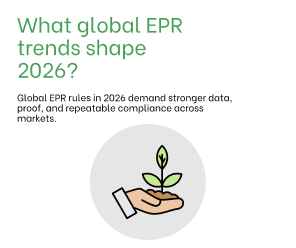Margin scheme for VAT on second-hand goods
Margin scheme for VAT on second-hand goods
The second-hand margin scheme is one of the VAT’s accounting schemes made available to help businesses in the UK, EU, and other countries. Find out the rules of the VAT’s margin scheme, which businesses are eligible to join it along with the benefits of doing so.
What are margin scheme goods?
The VAT on second-hand goods is a special scheme that allows businesses to calculate VAT on the difference between the selling price and the original purchase price of certain second-hand goods, rather than the full selling price. The scheme is only available for certain types of goods, therefore businesses must be eligible to use it.
What are the benefits of using the scheme?
There are several benefits of taking advantage of the scheme, including being able to reduce the overall cost of sold goods and simplifying VAT calculations. Additionally, taking advantage of the scheme can help businesses maintain a competitive edge by reducing prices for customers.
Second-hand goods – goods that you buy from a private individual. Such goods are always considered used goods, even if they are completely new.
Who is eligible for the VAT margin scheme?
Only businesses that are registered for VAT are eligible for the VAT margin scheme. The margin scheme is optional for 2nd hand goods – which means that you can choose whether to use it, or you may as well use the standard approach of charging VAT. If you opted for the margin scheme that doesn’t mean that you need to use it for all your second-hand sales, you can apply the standard scheme for intra-community sales or others. All EU countries, the UK, and some other countries have the margin scheme option in domestic VAT laws.
What goods are eligible for the VAT margin scheme?
The margin scheme is used as a means of reducing the possibility of double taxation on the sale of second-hand goods. This scheme is optional.
It operates by allowing dealers to pay Value-Added Tax (VAT) on the difference between the sale price and the purchase price of the goods.
The margin scheme applies to:
- Certain second-hand goods;
- Works of art;
- Antiques and collector’s items;
- Second-hand vehicles and second-hand agricultural machinery acquired by dealers as stock-in-trade on, or after, 1 January 2010.
You cannot use a margin scheme for:
- Any item you bought for which you were charged VAT;
- Precious metals;
- Investment gold;
- Precious stones.
If you choose not to operate the margin scheme, then the normal VAT rules apply.
Eligible acquisition of second-hand goods
Companies that qualify for the margin scheme must buy goods to sell in circumstances where VAT is non-refundable. Among the most common options are the following:
- Purchase of goods from unregistered entrepreneurs or individuals who are exempt from VAT;
- Cooperation with companies that already use the VAT margin scheme.
Cross-border sales of second-hand goods
You may use the margin scheme if you have purchased goods from another EU country. You can, for example, use the margin scheme if you have bought a second-hand bag from a private individual. In this case, the outgoing invoice should state that the vendor has used the margin scheme “Margin scheme – Second-hand goods”.
You cannot report margin scheme sales in OSS VAT return. If you sell to private individuals in another country and want to use a margin scheme you need to register for VAT in a member state of the destination.
You can use a margin scheme for the movement of your own goods between member states. As soon as the margin is zero you have nothing to report.
What is the exception?
For example, no need to use a margin scheme if you have bought a bag from an Estonian seller who paid Estonian VAT. Also, do not use the margin scheme if you have cited your VAT registration number and have thus purchased the bag VAT-free (reverse charge). If you import, i.e., purchase from a country outside the EU, you can not use a margin scheme when you sell that item. However, there are particular rules on the sale of artworks, collectors’ items, and antiques that you as a reseller want to import. In this case, you must first request permission and after a decision from the German Tax Agency, you may apply the margin scheme when importing and selling mentioned above goods.
What documents do you need?
You need purchase price confirmation when you want to use a margin scheme. You cannot use a margin scheme on goods bought with an incoming VAT invoice even if it is a reverse charge invoice. When you sell using a margin scheme your invoice should include the phrase “Margin scheme – Second-hand goods” or a reference to Articles 313 of the EC VAT Directive. You must not indicate the VAT amount on your invoices under such a scheme.
For payments by credit card, the purchase price will only be charged to the consumer when the vendor sends the actual order confirmation.
How to calculate VAT when paying with a margin scheme?
Companies that can use the VAT margin scheme must initially be VAT payers. When using the schema separate registration is not required. At the same time, it is imperative to meet all the conditions, indicating them in the declaration.
The VAT margin is calculated as follows: you need to calculate the difference between the amount paid for the goods and the amount for which it was sold. At the same time, this does not include additional costs, which are included when calculating profits. For example, when calculating the margin, you cannot include any repair or restoration costs in it.
VAT margin example
VAT margin scheme means that a business calculates VAT from added value instead of the whole revenue amount. I will give you an example: you bought a second-hand bag at eBay for €50 and sold it for €70. If you apply the margin scheme you need to calculate VAT from the difference – in the example difference – €20. That means that VAT due will be 20/120×20%=€3.3 VAT due.
Keeping records
If you choose to use a margin scheme you need to organize split tax accounting between the standard scheme and the margin scheme. You should use a global accounting calculation method for clothing, furniture, books, and several other types of goods which means that you don’t need to calculate a margin on each individual good, but on all goods sold.



